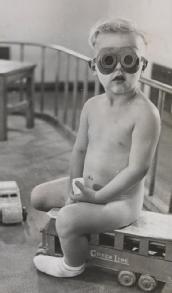Health and Longitudinal Research
‘Public health’ had long been behind social investigation (e.g. Victorian epidemiology) but how was this changed by the arrival of a publicly-funded healthcare system and new research techniques which sought to borrow from (amongst others) Mass-Observation? Who was being observed here? What kinds of things can we learn from the reanalysis of these sources?
Sample reading and viewing
Participants from two cohort studies (the 1946 National Study of Health and Development and the 1991 Children of the 90s/Avon Longitudinal Study of Parents and Children) discuss their experiences in Across Generations (link to YouTube)
The Seven Up! documentary series - sample first episode (broadcast Granada Television/ITV, 5 May 1964) available on YouTube
Laura Carter, 'The haidresser blues: British women and the secondary modern school, 1946-72', Twentieth Century British History, advanced access 2023 [link]
Hannah J. Elizabeth and Daisy Payling, 'From cohort to community: the emotional work of birthday cards in the Medical Research Council National Survey of Health and Development, 1946-2018', History of the Human Sciences, 35:1 (2022), pp. 158-188 [link]
Laura Tisdall, '"What a difference it was to be a woman and not a teenager": adolescent girls' conceptions of adulthood in 1960s and 1970s Britain', Gender and History, 34:2 (2022), pp. 495-513 [link]
Helen Pearson, The Life Project: the extraordinary story of our ordinary lives (London: Allen Lane, 2016), chapter 4, 'Staying alive: cohorts struggle for survival', pp. 125-155
Further resources
David Armstrong, Political Anatomy of the Body: Medical Knowledge in Britain in the Twentieth Century (Cambridge: Cambridge University Press, 1983)
Roberta Bivins, Contagious Communities: medicine, migration and the NHS in post-war Britain (Oxford: OUP, 2015) [Library e-book]
Stella Bruzzi, Seven Up (London: British Film Institute, 2007)
Enid Mills, Living with Mental Illness: a study in East London (London: Routledge & Paul, 1962)
Alex Mold, Peder Clark, Gareth Millward and Daisy Payling, Placing the Public in Public Health in Post-War Britain, 1948-2012 (Cham: Palgrave Macmillan, 2019), chapter 3, 'Imagining Publics', pp. 33-66 [link]
Joe Moran, 'An intimate history of social mobility in post-war Britain', Cultural and Social History, 20:2 (2023), pp. 249-265 [link]
Helen Pearson, The Life Project: the extraordinary story of our ordinary lives (London: Allen Lane, 2016)

A child awaiting solar treatment (light therapy) at a clinic in Bermondsey, 1937
